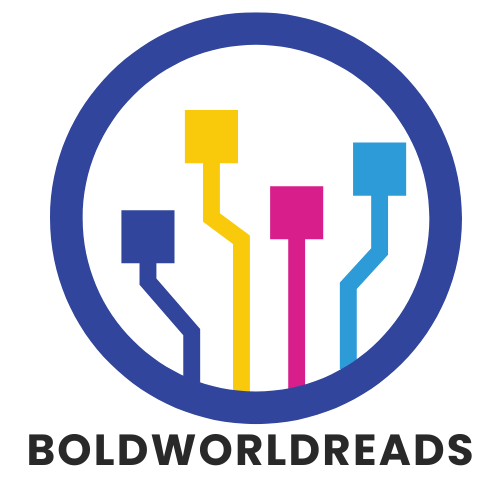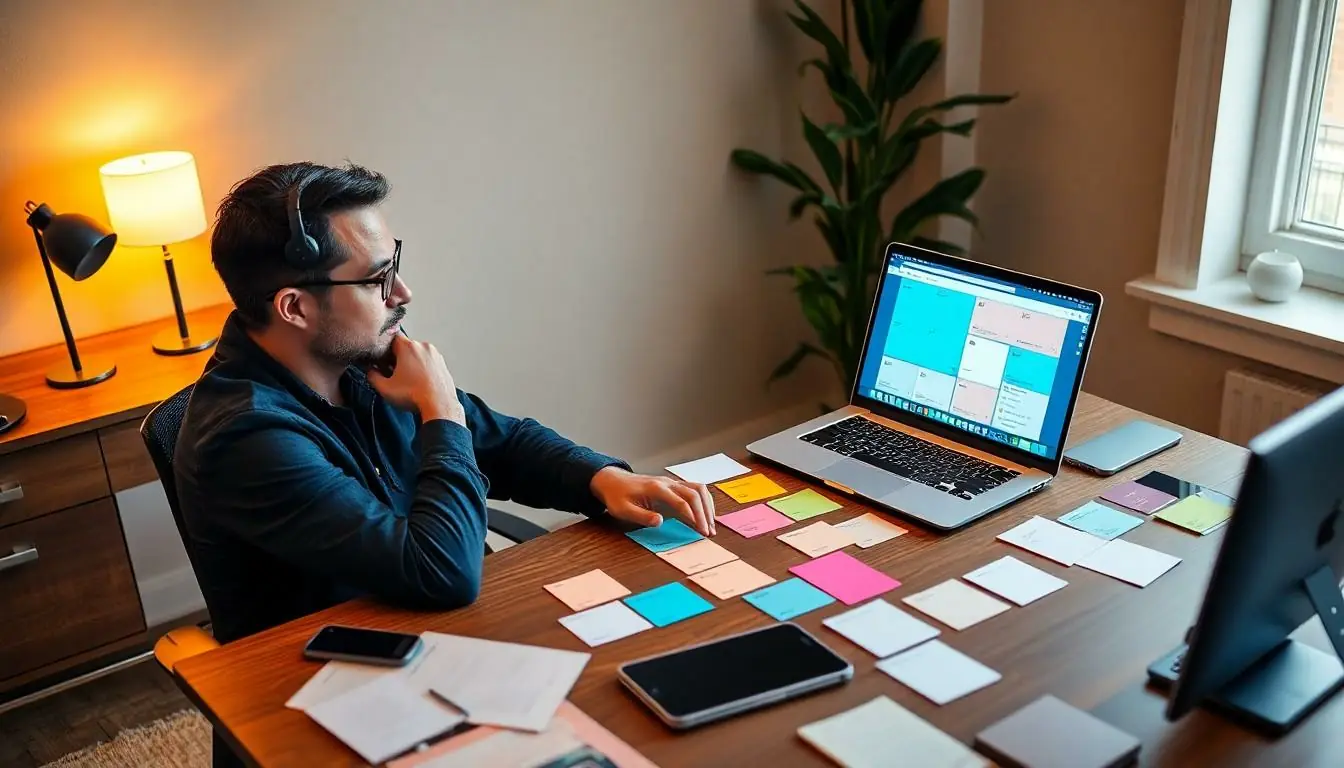Card sorting might sound like a fun game of organizing your childhood toys, but in the world of UX design, it’s a powerful tool for creating user-friendly experiences. Enter ChatGPT, the AI buddy that can help streamline this process like a pro. Imagine having a virtual assistant that not only understands your needs but also helps you sort through countless ideas without breaking a sweat.
Using ChatGPT for card sorting isn’t just smart; it’s like having a secret weapon in your UX arsenal. With its ability to analyze patterns and generate insights, it transforms a daunting task into an enjoyable brainstorming session. So, if you’re ready to level up your design game and make sense of user preferences, let’s dive into how ChatGPT can turn card sorting into a breeze.
Table of Contents
ToggleOverview of Card Sorting in UX
Card sorting serves as a critical technique in UX design. This method enables designers to understand user perspectives and preferences when organizing content.
Importance of Card Sorting
Card sorting enhances usability by revealing how users categorize and perceive information. It helps designers identify intuitive structures for navigation and content. Research indicates that 75% of users prefer systems that align with their mental models, emphasizing the need for effective categorization. Gathering data from users during the sorting session uncovers insights that guide layout decisions. Ultimately, card sorting paves the way for improved user experiences, aligning product design with user expectations.
Types of Card Sorting Methods
Several card sorting methods exist, each offering distinct insights. Open card sorting allows participants to group items freely and name those groups, which provides maximum insights into user categorization. Conversely, closed card sorting involves predefined categories, guiding participants to sort items into specific groups, yielding structured data. Hybrid methods combine elements of both, accommodating diverse user preferences. Remote and in-person sessions can help gather valuable feedback. Choosing the right method depends on project goals and user demographics.
Introduction to ChatGPT

ChatGPT serves as a powerful AI assistant in enhancing card sorting processes in UX design. Its capabilities extend beyond mere analysis, making complex tasks simpler and more insightful.
What Is ChatGPT?
ChatGPT is an advanced language model developed by OpenAI. This AI tool processes and generates human-like text, capable of understanding context and nuances. Designers utilize it to assist in various tasks, from drafting content to providing suggestions based on user behavior. It offers quick responses, making it an invaluable resource in the UX design toolkit. By leveraging vast amounts of data, ChatGPT generates insights that align closely with user needs.
Applications in User Experience
ChatGPT has multiple applications in UX design, especially in card sorting methods. It streamlines the organization of content by analyzing user input and identifying trends. Designers can leverage its insights to reveal how users categorize information intuitively. This AI tool enhances decision-making by providing data-driven recommendations, improving the effectiveness of navigation structures. Furthermore, it fosters collaboration among team members, offering a shared understanding of user preferences. Ultimately, integrating ChatGPT into the design process elevates user experience by ensuring that products resonate with target audiences.
How to Use ChatGPT for Card Sorting UX
Integrating ChatGPT into card sorting enhances the user experience significantly. It streamlines the process and provides valuable insights.
Setting Up ChatGPT for Card Sorting
Begin by defining the specific use case for card sorting within your project. Identify user personas and their preferences, as this context aids ChatGPT in delivering tailored responses. Input relevant keywords related to your content categories directly into the AI. Consider including examples of how users typically group content. These steps create a focused environment in which ChatGPT can generate effective sorting suggestions.
Creating Effective Prompts
Design prompts that are clear and specific. Ask ChatGPT to categorize content based on particular themes or user behaviors. Utilize direct questions, such as “How should users group these features?” or “What categories align with a typical user’s expectations?” Experimenting with various prompts facilitates deeper insights. Clarity in your questions can yield more precise answers that align with user needs, ensuring that the sorting reflects authentic user perspectives.
Analyzing the Responses
Evaluate the outputs generated by ChatGPT carefully. Look for common patterns and groupings within the text to identify prevailing themes. Consider how well these insights match known user preferences from previous research. Prioritize responses that resonate with user expectations, especially those aligning with users’ mental models. Compare multiple outputs, as this can reveal trends and divergences in user categorization, ensuring that the final organization reflects an intuitive navigation structure.
Benefits of Using ChatGPT for Card Sorting
Leveraging ChatGPT in card sorting workflows brings several advantages that can enhance the user experience design process. This AI tool significantly streamlines workflows, making tasks smoother and more efficient.
Improved Efficiency
ChatGPT automates the analysis of user input, reducing the time spent on organizing and categorizing information. Designers generate multiple content variations quickly, while the AI offers suggestions based on user behavior patterns. Collaborating with ChatGPT means less manual work, leading to faster decision-making. This speed allows designers to focus on creativity and strategy rather than time-consuming tasks. Integrating ChatGPT enhances overall productivity, enabling teams to work on multiple projects simultaneously without compromising quality.
Enhanced User Insights
Using ChatGPT provides valuable user insights that can shape content organization. The AI identifies emerging themes within user feedback, revealing how different users prioritize information. Each analysis of user responses uncovers unique categorization preferences that might not be initially apparent. These insights directly influence how designers construct navigation structures that resonate with target audiences. Understanding user perspectives empowers designers to create solutions that align with their mental models, thus improving overall usability and satisfaction.
Limitations and Considerations
Card sorting with ChatGPT presents specific limitations and considerations for effective use.
Potential Challenges
Users may encounter several challenges when implementing ChatGPT in card sorting workflows. Contextual understanding sometimes falters, leading to misinterpretations of user intent. As the model relies on provided prompts, vague questions yield less informative responses. Maintaining accuracy in categorization is critical, yet it can become compromised due to ambiguous feedback or insufficient data. Additionally, reliance on AI-generated insights can create complacency, hindering innovative solutions. Designers need to balance AI input with their creative instincts to foster optimal results.
Best Practices
Designers should adopt best practices to maximize the benefits of ChatGPT in card sorting. Begin by crafting clear, specific prompts that guide the AI in generating valuable insights. Iterating through diverse questions helps uncover deeper user preferences. Regularly evaluate the AI-generated responses to identify recurring patterns that reflect authentic user perspectives. Incorporating user feedback within the analysis process ensures alignment with mental models. Collaboration among team members can enhance decision-making, spreading diverse insights that lead to stronger navigation structures. Prioritizing these strategies elevates the user experience effectively.
Leveraging ChatGPT for card sorting can transform the way designers approach user experience. By streamlining the analysis process and providing valuable insights, it empowers teams to create intuitive navigation structures that resonate with users. The blend of AI efficiency with human creativity fosters a collaborative environment where innovative solutions thrive.
As designers embrace these tools, they unlock the potential to align their projects with user expectations more effectively. Prioritizing clear communication and thoughtful integration of user feedback ensures that the final outcomes reflect authentic user perspectives. Adopting these practices not only enhances usability but also elevates overall satisfaction, making ChatGPT an essential ally in modern UX design.



